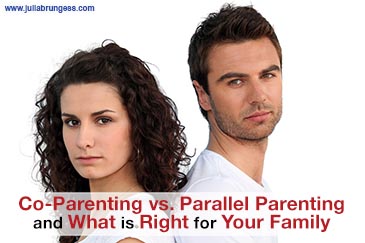Finding the right parenting style after your divorce is final will help you and your former spouse or partner provide the most nurturing and positive experience for your children. Most divorced couples fall into one of two parenting styles:
- Co-parenting is a more collaborative approach to child-rearing that allows both parents to interact with each other and make decisions together. This method is best suited to situations in which the parents are on good terms and can speak easily to each other about their children and other important events in their lives.
- Parallel parenting is designed to allow parents to avoid unnecessary contact with each other. This is best in cases where hurt feelings and hostility may affect the ability of two parents to communicate without animosity.
Understanding the different aspects of these two styles of parenting after a divorce will allow you to make the most appropriate choices for your children. Here are some of the primary differences between these options for you and your family.
How to Collaboratively Co-Parent
The co-parenting process requires a collaborative approach on the part of both parents. This means keeping the other parent informed about major and minor events and incidents that might affect your child’s life. Successful co-parents are supportive of each other and present a united front regarding discipline for their children, religious and educational options and medical and dental care. In almost all cases in which this approach is used, the two parents must generally live relatively close together and must be capable of supporting each other in practical ways. By working together closely to meet the challenges of child-rearing, co-parents are able to provide the most positive situation for their children.

When Parallel Parenting Is a Better Choice
If you and your former partner are not on good terms with each other, choosing to parent in a parallel way might be the most practical choice for you and your children. These arrangements are designed to keep your communications on an impersonal level and to avoid any hurt feelings, anger or conflict when managing the care of your children. Some of the basic guidelines for this parenting style include the following:
- Schedules and upcoming events should generally be communicated through email or on a shared calendar application.
- Changes to the custody or visitation schedule require written agreement by both parents through email.
- No personal information is communicated to the other parent.
- Children are not used to delivering messages or to communicate.

This approach is intended to allow parents to provide real support for their children without allowing their personal feelings to interfere. As emotional upset fades over time, parallel arrangements can sometimes evolve to become more collaborative and cooperative. This can help you to provide the most positive support for your children after your divorce is final.
Determining whether parallel parenting or co-parenting is right for you and your family is an important step in navigating the parenting process after a divorce. Both of these approaches have advantages and disadvantages. Choosing the right parenting style is essential to ensure the best support for your children after a divorce.

